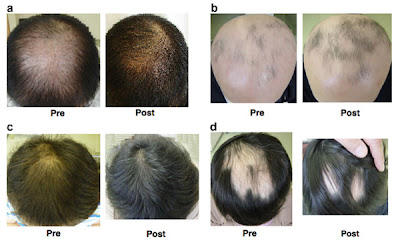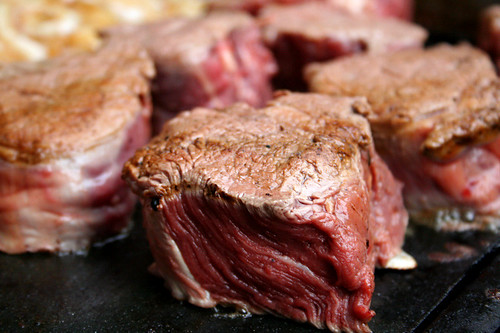The Forgotten Anti-Aging Classic: Retinoids Are the Skin's Best Friend

Before you whip out $150 for a Goji berry skin cream, how about giving retinoids a go? (Photo by km !)
When it comes to skin care, retinoids appear to be a true star. A star among useless junk floating around the space we call cosmetics.
What other compound has decades of research behind it and been shown to actually reduce wrinkles? I can't think of any. What I can think of is new products that promise the world and cost a fortune constantly being advertised in health magazines, in the hopes that middle-aged women with deep wallets and an insatiable thirst for looking younger would fall for their marketing claims.
And they do. These anti-aging, youth-restoring, skin-plumpening, illness-curing magical creams and gels in their tiny little jars sell like there's no tomorrow. The price tag is unimportant, as long as the wrinkles will be gone.
But of course, a hundred bucks later, the wrinkles will still be there, ready to absorb the next product with its new moleculer structure that will revolutionize the cosmetic industry. I shake my head in amusement and disbelief at this sight of desperate women grabbing stacks of hard-earned or divorce-obtained cash from their Louis Vuitton purses and throwing them at salespersons, demanding to be lulled into a false dream of a wrinkle-free tomorrow.
Okay, so maybe I'm exaggerating here (I've never seen them actually throw cash), but you get the point. Why is not everyone using retinoids if they wipe the table with everything else? Maybe they aren't that good after all. Maybe it's yet another marketing trick. Maybe they were lying about retinoids too!
To find out the truth, it's time to take the red pill and do a quick review of some of the studies on retinoids, before I once again plunge myself into the wonderful but scary world of skin care in the form of an experiment. Yes, I will be trying the stuff on myself.
What are retinoids?
Retinoids are derivatives of vitamin A – that is, they are chemical compounds related to vitamin A. We absorb retinoids from foods, mainly animal sources, in the form of retinyl esters, which are then hydrolized to yield free retinol. Retinol, along with retinal, tretinoin, isotretinoin and alitretinoin, form a class known as first-generation retinoids. Etretinate and acitretin form the second generation, while tazarotene, bexarotene and adapalene form the third.
Topical retinoids were originally approved by the FDA for treating acne, but it was quickly realized that retinoids improved the skin in other ways too. Currently, three prescription-strength retinoids are available and sold under various brands: tretinoin (Atralin, Avita, Retin-A, Retin-A Micro, Renova), tazarotene (Avage, Tazorac), and adapalene (Differin). Retinol creams are generally available without a prescription, but they are also less potent.
How do retinoids work?
One mechanism behind some of the beneficial effects of retinoid is an increase in the thickness of the skin. Even though retinoids actually thin the stratum corneum – the strong, flexible and dry outermost surface of the skin – they thicken the epidermis and the dermis underneath it (link). The end result is a thicker, more youthful looking skin.
Retinoids are also powerful exfoliators. They help peel off dead skin cells on the surface of the skin and increase the turnover of keratinocytes (link). Keratinocytes, the major cells in the epidermis, move from the basal layer to the epidermis, where they differentiate and then die. The cells are thus constantly exfoliated naturally as new keratinocytes form at the basal layer. Retinoids speeds this process up and gets rid of old cells to give room to younger, healthier cells.
Furthermore, retinoids increase the production of hyaluronic acid (link, link) and collagen (link). Together they give the skin a more hydrated and firmer appearance. Retinoids also stimulate dermal fibroblasts, which are cells that make the structural framework of animal tissues (link), and replaces disorganized collagen fibers with new, well-organized fibers (link). Angiogenesis, the formation of new blood vessels, improves blood flow to the skin and is the reason behind the healthy, rosy glow reported by tretinoin users (link).
What can retinoids do for my skin?
Okay, enough technical talk; how does all this translate into real life? While retinoids are succesfully used to treat conditions such as acne vulgaris and to improve wound healing, they also have several skin health benefits in normal persons with signs of skin aging. Here's a list of positive effects seen in retinoid users, as reported in the literature (e.g. link, link, link, link, link):
- Increased skin thickness and firmness
- Increased skin hydration
- Increased skin tolerance to external factors
- Reduced visible signs of sun damage
- Reduced fine wrinkles
- Restoration of even skin tone and reduced hyperpigmentation
- Reduction in dark circles under the eyes
- Reduced skin roughness
- Reduced irritation from shaving
- Less risk of skin cancer
- Reduced stretch marks
- A healthy, 'rosy glow'
In one self-assessment, 83% of the participants rated their skin as improved after 6 months of using 0.05% tretinoin. With continued use, fine lines and coarse wrinkles keep improving, and as mentioned before, the epidermis and dermis thicken significantly. The effects are not only cosmetic in nature, as is the case with products like moisturizers, but rather reflect the fact that underlying damage is being actively repaired.
How to use retinoids
Prescription retinoids come in varying strengths: 0.025%, 0.05% and 0.1%. Since retinoids can cause skin irritation, they may take some getting used to, especially with stronger creams and gels. Common symptoms are exfoliation, stinging, burning, redness and itching, but they generally start to subside within 2 to 6 weeks. Even the strongest concentration seems to be tolerated quite well after a while (link). No abnormalities in the skin have been reported even after years of continued use, making tretinoin safe for long-term use (link).
Many people start with 0.05% strength, and if they find it too irritating, switch to 0.025%. If your skin is very sensitive, consider starting with the 0.025% and gradually moving to higher concentrations. Or, alternatively, start by using the product only every other day or even twice a week and then switch to daily use once your skin is accustomed to it.
Many of the studies have used 0.05% tretinoin with good results, but stronger creams may be even more effective (link). Retinol causes little to no irritation but produces weaker results (link). One study suggests isotretinoin, which is commonly used orally but is also available as a topical gel, may be more effective than tretinoin (link). Retinoid gels in general appear to be stronger than creams, so a 0.05% gel may be more irritant (but also more effective) than a 0.05% cream.
It is recommended that retinoids are applied in the evening or at night rather than in the morning. Some people say the reason is because they increase susceptibility to photodamage, but I haven't found evidence to support this claim. Rather, a good reason not to apply it in the morning is that retinoids themselves are degraded by sun light. Before applying, it's also recommended to wait 15-20 minutes after washing your face, presumably to reduce absorption and thus irritation.
My retinoid experiment
To see if all the pro-retinoid hype is really true, I'm going to try retinoids on myself. But, instead of just applying it on my face and trying to remember what I looked like before I started using retinoids, I'm only going to apply the product on the left side of my face.
Or, to be precise, I have two products I'm going to be testing: tretinoin cream (0.05%) and tretinoin gel (0.05%). Both are generic versions from alldaychemist.com, which sells them without prescriptions (hooray for individual choice!). I'm starting off with the cream to see how well my skin can handle retinoids in the first place.
For more information on skin care, see these posts:
Topical Vitamin C for Skin: Re-examining the Case
Silica for Hair, Nails & Skin: BioSil vs. JarroSil
How I Accidentally Grew Hair on My Left Temple with Retinol – Experiment Conclusion
Coconut Oil Is Better than Olive Oil for Atopic Dermatitis
Read More......
















